Cop28 focuses energy transition spotlight on UAE
28 February 2023

Global climate negotiators, civil society groups, entrepreneurs and journalists will descend on Dubai’s Expo City in November for the 28th Conference of the Parties (Cop28) to the UN Framework Convention on Climate Change, putting the UAE at the centre and in charge of the annual climate talks.
UAE Vice President, Prime Minister and Ruler of Dubai, Mohammed bin Rashid al-Maktoum, has said Cop28 is the most important event the UAE will host in 2023. It is hard to argue otherwise.
Cop28 is expected to follow through with the implementation of a breakthrough loss-and-damage fund to help the most vulnerable countries address climate change, which was included for the first time in a Cop agreement last year.
It will conclude the first global stocktake, an assessment of the progress each country has made against the goals of the Paris Agreement, signed in 2016 by 195 nations, with the aim of keeping the mean global temperature rise to below 2 degrees Celsius compared with pre-industrial levels.
Contrasting agendas
Under the auspices of a state whose wealth was built for the most part on oil, negotiators are expected to lock horns over the policies, technologies and funding platforms best placed to enable climate mitigation and adaptation, and to wean the world off fossil fuels.
The relevance of the UAE's leadership in this year's Cop negotiations reflects the dilemma between meeting climate targets and a world that cannot yet live without hydrocarbons
It is not the first time an Opec member will host a Cop event – Qatar and Indonesia hosted them in 2012 and 2013, respectively. However, the appointment of Abu Dhabi oil chief and UAE climate envoy Sultan al-Jaber as Cop28 president-designate caused an uproar among environment and climate advocacy groups in January.
“I thought someone from outside the conventional energy sector would have given more credibility to the event,” an independent consultant tells MEED.
Despite this, commentators have also noted the UAE’s strategic clout and potential to act as a bridge between the affluent and developed countries increasingly referred to as the global north, such as the US, EU states, Russia and Japan, and the economically challenged countries in the global south, which includes swathes of Asia, Africa and Latin America.
The UAE maintains close economic and political ties with the majority of the countries in both groups, which largely have contrasting geopolitical, economic and energy profiles, as well as climate agendas.
According to Frank Wouters, director of the EU GCC Clean Energy Network and senior vice-president of Reliance Industries, the UAE, as one of the biggest donors of official development aid (ODA), can provide credibility and leadership in the effort to mobilise badly needed global capital towards climate change mitigation and adaptation efforts.
For instance, at Cop15 in Denmark in 2009, developed countries committed to a collective goal of mobilising $100bn a year for climate action in developing countries by 2020.
The goal was formalised at Cop16 in Mexico, and reiterated at Cop21 in France, with the timeline extended to 2025.
The latest available figure in 2020 stood at $83.3bn. “The reality is that this has not happened,” says Wouters. “So more can and should be done.”
With the UAE consistently rated among the countries with the highest ODA against gross national income, Cop28 is expected to provide further impetus to reaching this collective goal – one of the tangible outcomes most negotiators have hoped for at previous Cop events.
 Low-carbon fuels as the next LNG
Low-carbon fuels as the next LNG
A seat at the table
Despite the somewhat counter-intuitive proposition of giving petroleum-exporting countries a seat at the Cop negotiating table, the move is an important one, another expert tells MEED.
Mhamed Biygautane, a lecturer in public policy at the University of Melbourne, says these countries’ involvement in early discussions and negotiations is critical for any resultant decisions to have a meaningful impact on the ground.
“Petroleum states can make or break any climate-change negotiations because their interests are obviously at stake here,” he says.
“This is particularly the case for GCC states, whose economies rely heavily on oil rents and any reductions in oil exports will most certainly adversely affect their economies.”
Karen Young, senior research scholar at Columbia University’s Centre on Global Energy Policy, also points out the importance of considering the major difference in the politics of energy transition between national oil companies such as those based in Abu Dhabi and Saudi Arabia, and international oil companies such as BP and Shell.
“The state and the firm are linked, so energy policy … can include an emphasis on carbon capture and storage (CCS), on cleaner production and simultaneously on investments in renewables and economic statecraft – to deploy investment and technology to partner states that are both profitable and strategic in foreign relations,” Young says.
For example, the UAE has two national champions, Abu Dhabi National Oil Company (Adnoc) and clean energy firm Masdar, which in a different framework could be seen as a contradiction.
According to Young, the UAE is managing the energy transition with a goal of not just state survival, but of dominance across energy markets, technology and political ties across a broad geography.
This suggests that the UAE sees Cop28 as an opportunity not just to set a climate agenda, but also to put the country in a strong economic and political leadership position for decades.
Greenwashing fears
Significantly, 2022 was a year of record profits for global and national oil majors, as the war in Ukraine depressed supply and inflated prices.
 Aramco earns $42.4bn profit in third quarter
Aramco earns $42.4bn profit in third quarter
While oil firms around the world will continue to invest in renewables, some experts say they are likely to reinvest a significant amount in conventional hydrocarbons development due to robust oil demand, regardless of climate objectives.
This has reinforced fears of widespread greenwashing, or oil majors walking back on their net-zero targets, an issue commonly raised by advocacy groups at Cop events.
“Greenwashing is real, but ultimately it is not a useful framework,” says Young. “There is oil demand. There will continue to be oil demand. What matters is how we produce and transport it and, simultaneously, with purposeful government policy, reduce demand by creating incentives to use renewable energy and increase the costs of continuing to use oil.”
Biygautane also says stronger monitoring and international conventions with more powers for sanctions and penalties are necessary to deter businesses within and outside the hydrocarbons industry from making promises they will not honour.
Another expert points out the urgent need to focus on deploying clean technologies other than renewable energy, and to decarbonise sectors other than power, such as transport and buildings, along with the need for a bigger focus on transmission and distribution within the power sector.
“The major shortcoming remains in ensuring the required financing is there, which requires collective action from governments, corporates, financing and development institutions, in addition to individual behaviour and action,” says Jessica Obeid, academy associate at think tank Chatham House’s energy, environment and resources programme in London.
“It takes a village to achieve a serious sustainable transformation of our energy systems … requirements are many and efforts are only a few,” she says.
Resource allocation
For the GCC states, where historical data has pointed to a significant discrepancy between hydrocarbons production and clean energy investments, this will mean more resource allocation is required.
For example, data from regional projects tracker MEED Projects shows that the value of wind, solar and waste-to-energy generation contracts equates to a mere 10 per cent of the $254bn-worth of contracts awarded across the GCC states’ oil and gas sectors over the past 10 years, excluding investments made by GCC-based investors and developers overseas.
When it comes to projects in the advanced procurement stage, the ratio of renewable energy projects more than doubles, at 24 per cent against the value of oil and gas schemes.
This provides a positive market signal that could further improve if a portion of the GCC economic vision-related renewable energy schemes, carbon capture, utilisation and storage (CCUS) and clean hydrogen projects move into procurement.
While this improvement may not prove to be enough to appease all climate change advocates, the clear policy convergence on clean hydrocarbons production between the UAE, Oman, Saudi Arabia and, to a lesser extent, Kuwait, is
significant. It could help to further drive the gradual uncoupling of their economies from fossil fuels over the coming years or decades.
Columbia University’s Young concludes: “Which states ride the coattails of the UAE in this Cop and its subsequent agenda will be interesting to watch.”
Spotlight on the UAE
The UAE has been building up its green and clean energy base and working on energy transition objectives for some time. It set an energy diversification agenda in 2017 and was the first Middle East country to declare a target of net-zero carbon emissions by 2050. The Abu Dhabi Energy Department has launched regulations covering waste-to-energy, electric vehicles and clean energy certificates, along with energy-efficiency initiatives that include building retrofits. The UAE’s clean energy installed capacity, including three units of the Barakah nuclear power plant, stood at 7.6GW as of December. It is also finalising its green hydrogen roadmap. Pragmatic transitionThe growing number of new projects involving Masdar, which Al-Jaber chairs, forms part of the UAE’s pragmatic energy transition strategy. This involves developing and expanding nuclear and renewable energy and hydrogen capacity in addition to expanding its hydrocarbons output. Adnoc and Abu Dhabi National Energy (Taqa) have taken control of Masdar, whose operations have been split into separate renewable energy and green hydrogen businesses. The firm aims to have 100GW of renewable installed capacity and 1 million tonnes of green hydrogen by 2030. “Adnoc is the only national oil company (NOC) to pursue renewable merger and acquisition, buying into the H2Teeside hydrogen project in the UK alongside BP,” notes Kavita Jadhav, research director, corporate research at UK-based Wood MacKenzie. “Its investments in low-carbon energy will increase, and it may also make further international acquisitions in hydrogen; CCUS; and solar, in a wave that could be similar to the rush of activity seen in the UK and Europe in the run-up to Cop26.” Jadhav predicts the UAE and wider Middle East could have a similar eureka moment to the Inflation Reduction Act in the US, which promises a boom time for hydrogen, CCS and solar. “A lot can happen when you have the spotlight on you,” she says. |
Exclusive from Meed
-
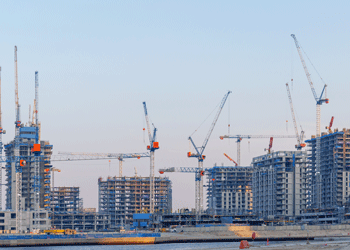 Managing risk in the GCC construction market
Managing risk in the GCC construction market19 December 2025
-
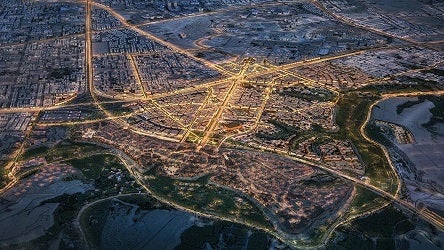 Diriyah signs land lease deal with King Saud University
Diriyah signs land lease deal with King Saud University19 December 2025
-
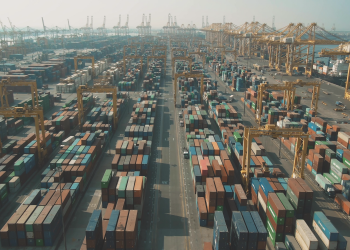 Kuwait to sign Mubarak port agreement next week
Kuwait to sign Mubarak port agreement next week19 December 2025
-
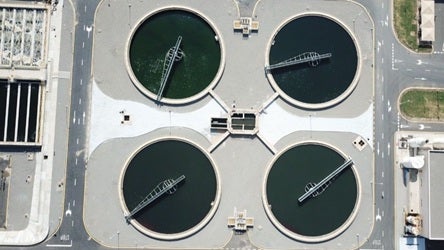 Metito consortium wins Mecca sewage scheme
Metito consortium wins Mecca sewage scheme19 December 2025
-
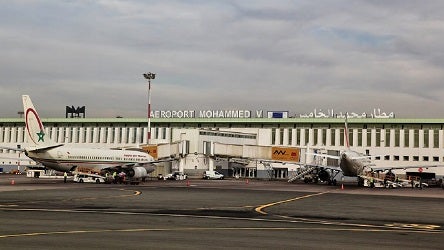 Morocco awards $1bn Casablanca airport terminal deal
Morocco awards $1bn Casablanca airport terminal deal19 December 2025
All of this is only 1% of what MEED.com has to offer
Subscribe now and unlock all the 153,671 articles on MEED.com
- All the latest news, data, and market intelligence across MENA at your fingerprints
- First-hand updates and inside information on projects, clients and competitors that matter to you
- 20 years' archive of information, data, and news for you to access at your convenience
- Strategize to succeed and minimise risks with timely analysis of current and future market trends

Related Articles
-
 Managing risk in the GCC construction market
Managing risk in the GCC construction market19 December 2025

The scale and complexity of construction projects under way in the GCC region has attracted global attention. And while large-scale project announcements continue to dominate the headlines, the underlying risks – insufficient financing, harsh contract clauses and a tendency to delay dispute resolution – are often overlooked.
Around the region, many contractors are experiencing difficulties once projects have started because they mistakenly believe they have the necessary in-house skillsets to navigate these complex issues.
MEED has convened a panel of construction consultants and specialists to develop a checklist to help contractors and subcontractors operating in the region to navigate the market’s challenges as the sector moves into 2026.
The proactive steps are aimed at positioning a company so that it can maximise recovery and mitigate threats posed by unresolved claims and poor commercial or contractual administration.
Systemic risk
The regional market is characterised by several systemic issues that amplify risks for contractors.
The fundamental problem is finance. Projects frequently suffer because they are not fully financed from the start, which places financial strain on contractors. This problem is then compounded by the region’s traditional contractual environment, which means disputes are typically not finalised until well after jobs have been completed, creating cash flow problems for contractors, particularly near the end of such projects.
Further financial strain is created by unconditional performance guarantees and retention. The combined requirement for advance payment bonds, a 10% performance bond and sometimes 5%-10% retention represents a significant draw on contractors’ cash flow. The growing tendency of employers to pull bonds further exacerbates the situation.
Many contractors sign up to one-sided contracts so as to secure more work, rather than challenging their employers. Key contractual issues include:
> Unrealistic timelines: Contractors set themselves up to fail by accepting unrealistic timescales on projects, despite the knowledge that the work often takes twice as long.
> Deficient design: A major risk, particularly on high-profile projects, is a lack of specification and design progress. Many contracts, such as the heavily modified Silver Book – a standard contract published by the International Federation of Consulting Engineers (Fidic) for turnkey engineering, procurement and construction projects – presuppose that the contractor has sufficient information to design, build and deliver, even when there is substantive information missing, which renders lump-sum pricing obsolete and inevitably leads to dispute.
> Lowest-bid mentality: Contractors often fail to factor necessary commercial support from legal and claims specialists into their tender figures, making their bid appear more competitive but leaving them without a budget to seek help until it is too late. As a result, projects are managed with budgets that are barely sufficient, rather than being run properly to a successful conclusion.

Supply-chain erosion
The quality and capacity of the subcontractor market, particularly in the mechanical, electrical and plumbing (MEP) field, has eroded significantly.
Some major MEP players have closed or left the market due to underpricing, prompting contractors to call in their performance bonds. This means the region is receiving progressively lower quality for increasingly higher costs, further straining the delivery phase for main contractors.
The risk of subcontractor insolvency is increasing and must now be considered a primary project risk. Contractors should monitor financial health, diversify subcontractor dependencies, challenge allocated resources and secure step-in rights wherever possible.
Many Silver Book contracts in the GCC now include heavily amended, employer-friendly clauses that push design and ground-risk even further onto the contractor – often beyond what Fidic intended. These amendments require careful review and firm pushback.
The GCC remains a market of opportunity, but success in 2026 will belong to contractors that combine disciplined tendering, transparent commercial governance and early issue resolution. Optimism is not a strategy; preparation is.
A 10-point checklist for contractors in 2026
1. Mandate contractual due diligence: Invest time and money into a thorough contract review before signing. Be prepared to challenge harsh clauses, particularly those unfairly allocating risk, such as unknown conditions and full design responsibility. Assume that bespoke rather than standard amendments govern your entitlement. Treat the special conditions as the real contract.
2. Factor commercial support into the budget: Do not omit the cost of essential commercial support from the tender, such as quantity surveyor teams, quantum and delay specialists, legal review and claims preparation. Even if not visible in the front-line figures, this cost – which could be as low as 0.01% of the project value – must be factored in to ensure a budget for early and continuous engagement.
3. Prepare a realistic baseline programme: Stop committing to programmes just to fit the tender. Develop a realistic programme from the start, identifying risks and including necessary code books to track delays early. Consider commissioning an independent programme review at the tender stage – this is common internationally and reduces later arguments about logic, durations and sequencing.
4. Confirm project funding: Ensure that the project financing is fully in position before starting work. Many problems stem from projects that are only partially financed, leading to cash running out near completion. Gone are the days of not asking employers for greater transparency when it comes to funding projects.
5. Establish a strong commercial and claims function: This is where commercial management starts. Set up systems to ensure contractual compliance, including seven-day claim notifications. Variations are inevitable, and proper substantiation is required to secure entitlement – if it is not recorded, it cannot be recovered. Diaries, cost records and notice logs remain the foundation of entitlement.
6. Seek early specialist engagement: Prevention is better than a cure. Bring in specialists early to examine time and cost issues before problems arise. Consultants can provide advice, help set up the correct commercial systems and prevent the escalation of unresolved issues.
7. Adopt an old-school approach to claims management: Technology is useful, but nothing beats resolving issues face to face. Engage directly with the employer’s team regularly to negotiate and agree claims early. This manages the client’s expectations when it comes to budgeting and allows the contractor to secure cash flow sooner. A simple early-warning culture – even when not contractually required – prevents surprises and builds trust with the client.
8. Avoid wasting resources: Focus claims efforts only on events that are actually recoverable and demonstrably critical. Contractors often waste time chasing things that will not be recoverable. Prioritise issues that are both time-critical and clearly fall under the employer’s risk – everything else should be logged but not pursued aggressively.
9. Upskill internal teams: Use specialist involvement as an opportunity to upskill your in-house commercial team. Have them sit alongside specialist consultants to learn proper commercial and contractual administration processes, creating a lasting work-culture benefit.
10. Push for faster dispute resolution: When a dispute arises, advocate for a swift resolution mechanism like adjudication, mediation or expert determination to temporarily resolve cash flow issues. Dispute adjudication boards are intended to give quick, interim decisions. However, if not set up from the start of the project, the process becomes protracted – sometimes taking many months – so fails to provide the cash-flow relief contractors urgently need. Where clients resist adjudication, propose interim binding mediation or expert determinations, or failing this, milestone-based dispute workshops – anything that accelerates getting cash back on site. MEED would like to thank Refki El-Mujtahed of REM Consultant Services (refki@rem-consultant.com; www.rem-consultant.com) for facilitating this article, as well as the following co-contributors:
Aevum Consult | Lawrence Baker | lawrence.baker@aevumconsult.com | www.aevumconsult.com
Decerno Consultancy | Lee Sporle | leesporle@decernoconsultancy.com | www.decernoconsultancy.com
Desimone Consulting | Mark Winrow | Mark.Winrow@de-simone.com | www.de-simone.com
Forttas | Derek O’Reilly & Martin Hall | derek.oreilly@forttas.com & martin.hall@forttas.com | www.forttas.com
IDH Consult | Ian Hedderick | ian.hedderick@idhconsult.com | www.idhconsult.com
White Consulting | Nigel White | nigelwhite@whiteconsulting-me.com | www.whiteconsulting-me.com
https://image.digitalinsightresearch.in/uploads/NewsArticle/15289183/main.gif -
 Diriyah signs land lease deal with King Saud University
Diriyah signs land lease deal with King Saud University19 December 2025
Saudi Arabia gigaproject developer, Diriyah Company, has signed a long-term land lease agreement with Riyadh Valley Company, an investment arm of King Saud University.
Diriyah Company will lease 552,000 square metres (sq m) of land from King Saud University for a period of 70 years.
The deal will enable the company to add the land bank to its second phase of the Diriyah Project, which is also known as DG2.
The agreement was signed by Diriyah Company's Group CEO, Jerry Inzerillo, and the acting president of King Saud University and Riyadh Valley Company chairman, Ali Masmali.
Diriyah Company is already developing the area adjacent to King Saud University. In April, it awarded an estimated SR4bn ($1.1bn) contract for a utilities relocation package for the King Saud University project located in the second phase of the Diriyah Gate development (DG2).
The contract was awarded to the joint venture of Beijing-headquartered China Railway Construction Corporation and China Railway Construction Group Central Plain Construction Company.
The scope of the contract covers the design, construction and relocation of KSU's utilities and administration offices, as well as the construction of a district cooling plant, water storage facilities, a sewage treatment plant, a natural gas plant, a diesel transfer pumping station, a utility tunnel, irrigation water storage tanks, office buildings, warehouses and maintenance workshops.
In addition to KSU, DG2 will feature residential developments, hotels, an opera house, the Saudi Museum of Contemporary Art, six academies, an arena and a mosque.
The Diriyah masterplan envisages the city as a cultural and lifestyle tourism destination. Located northwest of Riyadh’s city centre, it will cover 14 square kilometres and combine 300 years of history, culture and heritage with hospitality facilities.
https://image.digitalinsightresearch.in/uploads/NewsArticle/15287776/main.jpg -
 Kuwait to sign Mubarak port agreement next week
Kuwait to sign Mubarak port agreement next week19 December 2025
Kuwait and China are expected to sign the agreement to develop the subsequent phases of Kuwait’s Grand Mubarak Port next week.
According to media reports, the announcement was made by Kuwait’s Public Works Minister Noura Al-Mashaan on Thursday.
The contract value is estimated to be about KD1.2bn ($4bn).
In May, Beijing-headquartered China Harbour Engineering Company, a subsidiary of China Communications Construction Company (CCCC), signed an early contractor involvement (ECI) agreement with Kuwait to develop the next phases of the project.
The initial works include surveying, investigation, hydrological observation, geophysical exploration, testing, model testing, process simulation, design review, owner inspection, preliminary design of sand-retaining embankments, and on-site services and management.
The project launch ceremony was held in mid-April. It was attended by several high-profile representatives from Kuwait and China, including Fu Xuyin, China’s vice-minister of the Ministry of Transport, Zhang Jianwei, the Chinese ambassador to Kuwait, and Nora Mohammad Al-Mashaan, Kuwait’s minister of public works.
In January, MEED reported that Kuwait’s cabinet had approved a bid from China Communications Construction Company to implement all stages of its Mubarak Al-Kabeer Port project.
The country ramped up its efforts on the project after meetings between Kuwaiti and Chinese officials in June last year.
In 2023, the two countries signed a memorandum of understanding to develop port infrastructure.
Phase one of the project cost $1.2bn and was completed in 2014.
The project’s first phase included site levelling and the development of a marina, quay walls, berths, a navigational terminal and port buildings.
The port is not operational because the phase one works did not include vital equipment such as cranes.
It is understood that the completion of phase two will allow the port to start operations.
The full scope for phase two of the project is expected to include:
- Construction of loading and unloading facilities
- Construction of quay walls and reclamation
- Construction of the container yard and the back of the port
- Infrastructure works
- Construction of buildings
- Construction of a container terminal
- Construction of associated facilities
- Installation of safety and security systems
A third phase is also planned to further expand the port.
The latest developments follow a series of agreements signed in September 2023 to deliver some of Kuwait’s immediate development goals for 2024-28. These agreements will position Chinese companies to play a leading role in the Fourth Kuwait Master Plan 2040.
https://image.digitalinsightresearch.in/uploads/NewsArticle/15287252/main.jpg -
 Metito consortium wins Mecca sewage scheme
Metito consortium wins Mecca sewage scheme19 December 2025
A team comprising Metito (UAE), Etihad Water & Electricity Company (UAE) and SkyBridge Company (UK) has been awarded a contract to develop the Hadda independent sewage treatment plant (ISTP) project in Mecca Province, Saudi Arabia.
The contract was awarded by Saudi Water Partnership Company (SWPC), the kingdom’s principal off-taker for water and wastewater public-private partnership (PPP) projects.
The project will be developed on a build-own-operate-transfer basis and is expected to begin operations in 2028, followed by a 25-year operating term.
The plant will provide an initial treatment capacity of 100,000 cubic metres a day and will feature a treated sewage effluent (TSE) reuse system with a storage tank and a 38-kilometre pipeline designed to handle 350,000 cubic metres a day.
Earlier in December, MEED reported that the team had been named preferred bidder at a levelised tariff of SR2.354 ($0.63) a cubic metre.
SWPC selected the Miahona-led consortium as the reserve bidder for this project with the second-lowest submitted bid of SR2.599($0.69) a cubic metre.
According to SWPC, the TSE reuse system accounted for 31% of the preferred tariff for the Arana ISTP and 27% for the Hadda ISTP.
In March last year, SWPC signed a 25-year water-purchase agreement with a team comprising the local Miahona Company and Belgium-based Besix for the contract to develop and operate the Al-Haer ISTP in Riyadh, as part of the third batch of the kingdom’s ISTP programme.
Four months later, the Saudi-listed Power & Water Utility Company for Jubail & Yanbu (Marafiq) joined the developer consortium.
The Miahona/Besix team offered to develop the project for SR1.9407 ($0.5173) a cubic metre, while the second-lowest bid, from a team comprising Spain’s Acciona and the local Tawzea, was SR2.2041($0.588) a cubic metre.
https://image.digitalinsightresearch.in/uploads/NewsArticle/15287185/main.jpg -
 Morocco awards $1bn Casablanca airport terminal deal
Morocco awards $1bn Casablanca airport terminal deal19 December 2025
Morocco’s National Airports Office (ONDA) has awarded a MD12bn ($1.2bn) contract to build the new terminal at Casablanca’s Mohammed V International airport.
The contract was awarded to the joint venture of local firms Societe Generale des Travaux du Maroc (SGTM) and Travaux Generaux de Construction de Casablanca (TGCC).
Construction work on the Mohammed V International airport expansion is expected to begin immediately.
The project is slated for completion in 2029.
The expansion will cover more than 600,000 square metres (sq m) and increase the airport’s capacity to 30 million passengers a year.
The project is designed by a consortium comprising the local branch of French engineering firm Egis Batiment International, Morocco’s Ala Concept and UK-based RSHP Architects.
The scope of work covers preparatory works, structural works, waterproofing, steel structural works, building facades, electrical, mechanical and plumbing (MEP) works, data centre works, HVAC systems and other associated works.
The tender also covers the construction of a 300-key airside hotel.
The new terminal is expected to be ready in time for the 2030 Fifa World Cup, which Morocco is co-hosting alongside Portugal and Spain.
ONDA tendered the project contract on 4 November, with a bid submission deadline of 16 December, as MEED reported.
In July, ONDA began early works on the new terminal building, awarding an estimated MD294m ($29m) deal for enabling works to local firm Societe de Travaux Agricoles Marocaine.
In January, Morocco’s Transport & Logistics Minister, Abdessamad Kayouh, said that the study to expand the airport’s capacity was nearing completion.
The project is part of Morocco’s MD42bn ($4.3bn) plan to expand key airports in anticipation of increased passenger flow for the 2030 football World Cup.
Morocco plans to upgrade several airports, including those in Tangier, Marrakech and Agadir, increasing their respective annual passenger capacities to 7 million, 16 million and 7 million.
There are also plans to add a new terminal at Rabat-Sale airport, raising its capacity to 4 million passengers annually, and to increase Fez airport’s capacity to 5 million passengers annually.
The new terminal at Mohammed V International airport will be connected to a high-speed train network linking Kenitra to Marrakech.
 READ THE DECEMBER 2025 MEED BUSINESS REVIEW – click here to view PDF
READ THE DECEMBER 2025 MEED BUSINESS REVIEW – click here to view PDFProspects widen as Middle East rail projects are delivered; India’s L&T storms up MEED’s EPC contractor ranking; Manama balances growth with fiscal challenges
Distributed to senior decision-makers in the region and around the world, the December 2025 edition of MEED Business Review includes:
> AGENDA 1: Regional rail construction surges ahead> INDUSTRY REPORT 1: Larsen & Toubro climbs EPC contractor ranking> INDUSTRY REPORT 2: Chinese firms expand oil and gas presence> CONSTRUCTION: Aramco Stadium races towards completion> RENEWABLES: UAE moves ahead with $6bn solar and storage project> INTERVIEW: Engie pivots towards renewables projects> BAHRAIN MARKET FOCUS: Manama pursues reform amid strainTo see previous issues of MEED Business Review, please click herehttps://image.digitalinsightresearch.in/uploads/NewsArticle/15287093/main.jpg



